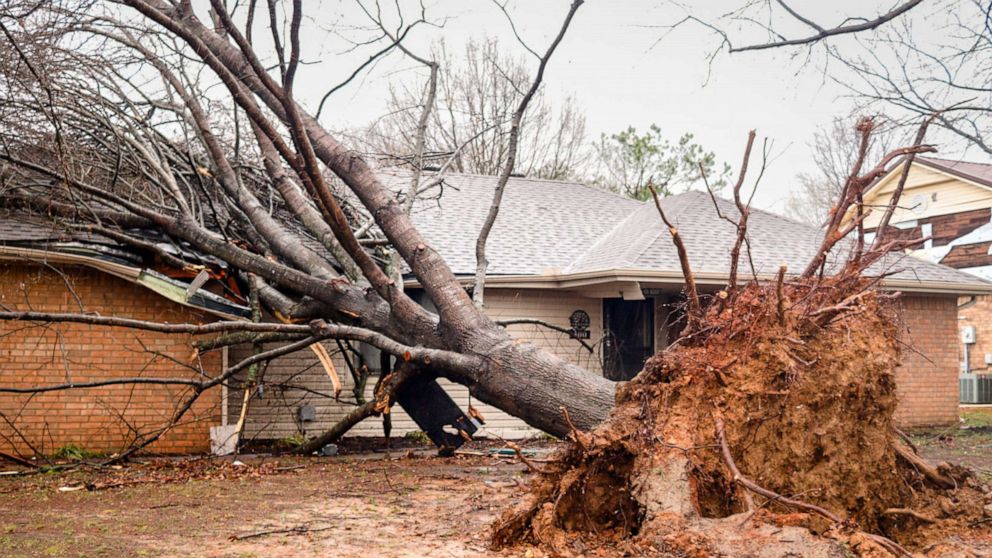I decided to take a look at this from a historical perspective to see how common those types of events are. Using the events you listed to set the criteria, I looked for events since 1950 that had at least 50 confirmed tornadoes and at least 3 E/F4+ tornadoes. Obviously this comes with the inherent biases of historical tornado data (undercounting of total tornadoes, particularly in the pre-doppler era, and the change in rating systems making violent ratings less common overall after 2007), but I think it's a useful perspective.
Even using a relatively liberal definition of "event", and not restricting it to 24-hour periods, I came up with 24 events that produced 50+ tornadoes and 3+ violent tornadoes, or approximately one every three years over the 72-year period. This is obviously an arbitrary standard for a "significant" event, but I wanted to work with the definition according to the examples you provided. As for the truly extreme events that produce 50+ tornadoes and 3+ violent tornadoes in a 24-hour period (roughly), only 14 meet those criteria, or about one every five years.
Obviously these events don't occur at evenly-spaced intervals, they tend to be clustered within periods of two to three years based on the large-scale pattern, but even in periods when the large-scale pattern is favorable, they're rare events. Considering that we just had one on Easter 2020, we're not even overdue for an event of that scale at this point, so suggesting that we're in an unusual situation is ahistorical.
Following up on this, here are the 24 post-1950 events that I found that met the criteria of 50+ tornadoes and 3+ violent tornadoes (the 14 events producing 50+ tornadoes and 3+ violent tornadoes in a 24-hour period in
bold):
7-9 June 1953 (Flint-Worcester Outbreak): 50 tornadoes, 6 violent
19-21 May 1957: 67 tornadoes, 4 violent (including the Ruskin Heights, MO F5)
4-6 May 1960: 71 tornadoes, 5 violent (including the Prague, OK F5)
10-12 April 1965 (Palm Sunday Outbreak): 55 tornadoes, 18 violent
19-21 May 1973: 63 tornadoes, 3 violent
3-4 April 1974 (Super Outbreak I): 148 tornadoes, 30 violent
2-3 April 1982: 63 tornadoes, 4 violent (including the Broken Bow, OK F5)
11-13 March 1990: 64 tornadoes, 4 violent (including the Hesston and Goessel, KS F5s)
2-3 June 1990: 66 tornadoes, 7 violent
26 April 1991: 58 tornadoes, 6 violent (including the Andover, KS F5)
14-18 June 1992: 170 tornadoes, 4 violent (including the Chandler, MN F5)
21-23 November 1992: 95 tornadoes, 5 violent
28 February-1 March 1997: 56 tornadoes, 3 violent
15-16 April 1998: 63 tornadoes, 4 violent (including the Lawrenceburg, TN F5)
3 May 1999: 73 tornadoes, 4 violent (including the Bridge Creek-Moore F5)
23-24 November 2001: 67 tornadoes, 3 violent
4 May 2003: 86 tornadoes, 4 violent
5-6 February 2008 (Super Tuesday): 87 tornadoes, 5 violent
16-17 June 2010: 61 tornadoes, 4 violent
25-28 April 2011 (Super Outbreak II): 360 tornadoes, 15 violent
21-26 May 2011: 241 tornadoes, 5 violent (including the Joplin and El Reno EF5s)
18-21 May 2013: 67 tornadoes, 3 violent (including the Moore EF5)
16-18 June 2014: 76 tornadoes, 5 violent (including the Pilger EF4)
12-13 April 2020 (Easter Outbreak): 141 tornadoes, 3 violent
Also note that there are only three "Super Outbreaks", which I define as events which produced double-digit violent tornadoes; the 21-22 March 1952 also produced 11 violent tornadoes, but wasn't included above because it only had 31 confirmed tornadoes (although that's probably significantly undercounted). If we go back to the beginning of useful historical tornado data (around 1880), there are three other events that produced 10+ violent tornadoes: the May 1896 outbreak sequence, the May 1917 outbreak, and the 21-22 March 1932 outbreak, giving a total of seven in the last 140 years, or about one every 20 years. Again, the usual caveats about historical data and rating systems apply, but I think it's a good approximation of the frequency of these extreme events.


